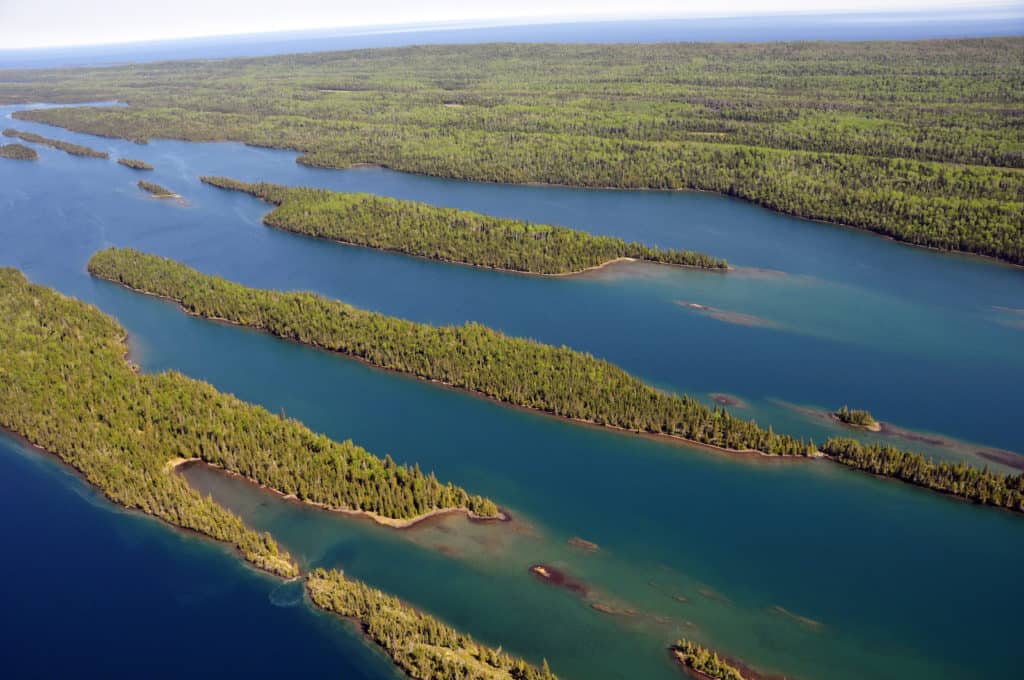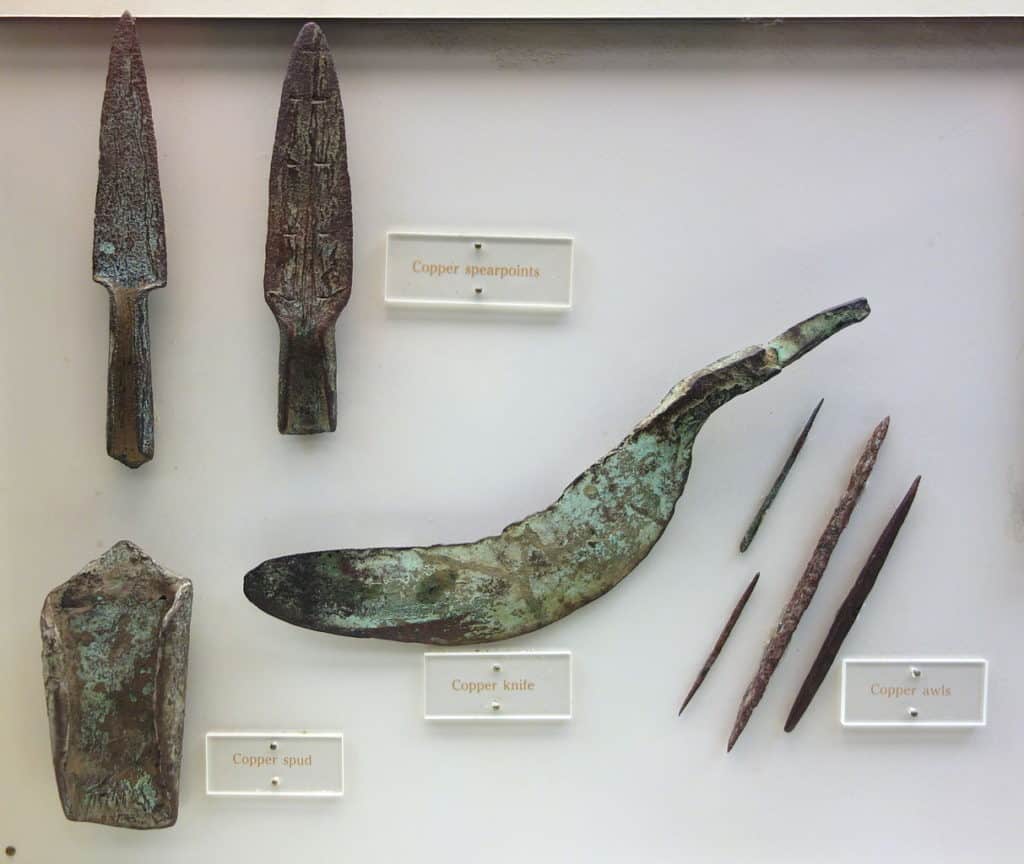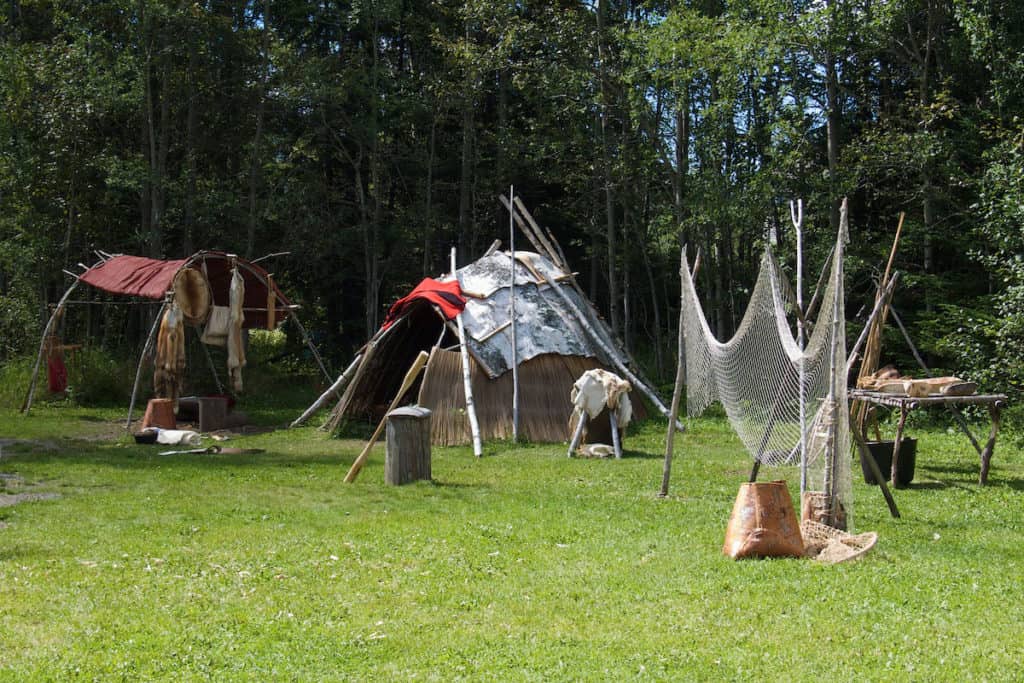
The archipelago of islands in Lake Superior that comprise Isle Royale National Park, or Minong as it is known to the Ojbiwe, has been officially recognized for its cultural resources by the federal government. The entire island chain was added to the National Register of Historic Places in January.
While numerous sites on the islands related to European-immigrant history, such as lumbering, mining, and commercial fishing, are already on the register, the new listing encompasses the whole area, and specifically recognizes its important role in the lives of the Ojibwe and prehistoric peoples.
The new entry on the register creates what is called the Minong Traditional Cultural Property.
“The designation enhances our relationship with the Grand Portage Band, with whom we consult frequently,” Seth DePasqual, cultural resource manager at Isle Royale National Park, told the Capital News Service. “It provides ethnographic information that will inform resource management island-wide and then also our interpretive programming.”
The area is believed to have been inhabited as far back as 4,500 years ago, according to research published by Michigan Technological University. Pottery and tools, including projectile points, have been found at numerous sites. It seemed people both inhabited the island, and others only visited. It remains important to Ojibwe people today.
Procuring precious metal

For more than a millennium before Europeans arrived in the area in the 18th and 19th century, people found a valuable resource on Isle Royale: copper. Early people had a strong interest in the metal, which was hammered into knives, points, and ornaments.
“The dwellers on Lake Superior seem to feel the most superstitious reverence for copper, which is so often found on the surface-soil in a remarkable state of purity,” reported German-born traveler and cartographer Johann Georg Kohl in 1859. “They frequently carry small pieces of copper ore (sic) about with them in their medicine-bag; they are carefully wrapped up in paper, handed down from father to son, and wonderful power is ascribed to them.”

Kohl quoted a Native American leader in his report on a visit to Isle Royale, who explained the metal’s cultural significance.
“The lump of copper in the forest is a great treasure for me,” Keatanang, headman of the Ontonagon Band, told Kohl. “It was so to my father and grandfather. It is our hope and our protection. Through it I have caught many beavers, killed many bears. Through its magic assistance (I) have been victorious in all my battles, and with it I have killed our foes. Through it, too, I have always remained healthy, and reached that great age in which thou now findest me.”
Modern scientists have even found evidence of pollution related to ancient mining in the outlet of streams flowing into Lake Superior.
“We analyzed metal, carbon, nitrogen, and organic matter concentrations to document past mining pollution in sediment cores recovered from McCargoe Cove; a long, narrow inlet of Lake Superior on Isle Royale that receives drainage from a watershed that contains numerous ancient copper mines,” David Pompeani of the University of Pittsburgh wrote in a 2014 paper. “At McCargoe Cove, concentrations of lead, copper, and potassium increase in the sediments after AD 1860 and between 6500 and 5400 years before AD 1950 (yr BP). Metal pollution increases at McCargoe Cove exceed natural (or background) levels and coincide with radiocarbon dates associated with copper artifacts and existing lead pollution reconstructions from lakes on the Keweenaw Peninsula.”
More than 1,000 pits dug by Native American people to extract copper have been located on the islands. Over the centuries, they developed a method of beating bedrock with rounded stones from Lake Superior beaches to extract the metal. Lake Superior copper has been found as far away as New England, due to trade.
Telling more of the story

The historic designation provides an opportunity to correct a past error. Indigenous connections to Isle Royale were largely ignored when the National Park was created in 1945, and when other sites at the park have been added to the historic registry over the intervening years.
It is hoped that the historic designation may help strengthen ties between the Ojibwe who live elsewhere but still maintain ties to Minong. Many members of the mainland Grand Portage tribe still visit the islands for spiritual reasons, to gather berries, or “connect with the past,” the registry nomination reads.
“The Park Service paid little attention to the historical relationship between the Ojibwe and the Island when creating the new National Park,” a 2010 report on seeking the historic designation reads. “Finding ways to recognize Ojibwe’s historical connections to Minong and to invite them to renew their personal association with the Island would respect their centuries-long association with Isle Royale and their role in creating a historical wilderness in that place.”
Historic designation may help tell such stories. Because 99 percent of the National Park is also designated wilderness, which has strict limitations on human structures and other permanent impacts, the designation could also help write a new story.
“We could be setting a real precedent for how parks manage historic places in wilderness areas,” Liz Valencia, Isle Royale Chief of Interpretation and Cultural Resources Liz Valencia, told the National Trust for Historic Preservation in 2016.
Now that the island chain has been added to the National Register, the real work of rebuilding cultural connections and relationships can begin.
References
- Isle Royale gets historic designation, Spartan News Room, Eric Freedman Eric Freedman March 1, 2019
- Native American Heritage, Archaeological History of Isle Royale, Isle Royale National Park, Cultural Resources Interactive Mapping Project, Isle Royale Institute, Michigan Technological University
- Pompeani, D. P., Abbott, M. B., Bain, D. J., DePasqual, S., & Finkenbinder, M. S. (2015). Copper mining on Isle Royale 6500–5400 years ago identified using sediment geochemistry from McCargoe Cove, Lake Superior. The Holocene, 25(2), 253–262. https://doi.org/10.1177/0959683614557574
- American Rustic: Isle Royale National Park. Preservation magazine, National Trust for Historic Preservation, Dennis Hockman, Summer 2016
- Cultural Resources On Isle Royale National Park: An Historic Context (PDF), Philip V. Scarpino, Indiana University/Purdue University, Indianapolis, September 2010

